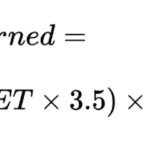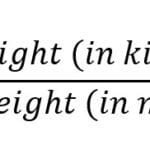Target Weight Calculator – Ideal Weight & Lean Body Mass
In the quest for better health and fitness, understanding your ideal weight and lean body mass (LBM) plays a crucial role. These metrics provide insights into your body’s composition and help tailor fitness and nutrition plans that align with your health goals. With the Ideal Weight and LBM Calculator, you can embark on a journey to discover and achieve your body’s full potential. This article delves into the science behind ideal weight and lean body mass, offering the latest research and practical tips to guide you on your path to optimal health.
IBW Calculator & LBM Calculator

Your Ideal Weight? Easy. Getting Lean Without Missing Out? That’s Recipians
It’s not just about numbers—it’s about living lean without giving up the foods you love. Recipians helps you achieve that toned body with mouth-watering, balanced meals and science-backed trackers. Ready to enjoy the journey?
UNDERSTANDING lean body meaning
Ideal Body Weight Meaning & Lean Body meaning
Ideal Body Weight (IBW) refers to the optimal weight range for an individual based on height, gender, and frame size. It provides an estimate of the weight that is associated with the lowest risk of disease, good physical function, and a healthy body composition.
✔ IBW is not necessarily the weight at which you look the thinnest—it is a scientifically determined healthy range.
✔ Factors like muscle mass, bone density, and body fat percentage can influence the “ideal” weight for a person.
✔ It is often used in clinical settings to calculate medication dosages, nutritional requirements, and fitness assessments.
Lean Body Mass (LBM) refers to everything in the body except fat. This includes muscles, bones, water, organs, and connective tissues.
✔ More lean mass = higher metabolism, meaning your body burns more calories at rest.
✔ LBM helps determine muscle strength, endurance, and overall physical function.
✔ Having a higher LBM and lower fat mass is a better indicator of health than weight alone.
Correlation Between IBW & LBM
- People with higher muscle mass may weigh more than their IBW but still be very healthy.
- Someone with low LBM but normal IBW may actually have higher fat percentages, which can be less healthy.
- IBW provides a general target, but LBM helps determine how much of that weight is actually useful muscle vs. fat.

how to calculate lean muscle mass
Popular Methods to Calculate Ideal Weight
BMI (Body Mass Index)
Fast and widely used but doesn’t consider muscle vs. fat.
Waist-to-Height Ratio
- Waist size ÷ height
- Should stay below 0.5 for optimal health.
Frame Size Adjustment
- Small, medium, or large frame can shift your ideal weight.
- Wrist measurement is often used to estimate frame size.
| Wrist Size (inches) | Body Frame (for women 5’5” & under) |
|---|---|
| < 5.5 | Small |
| 5.5 – 5.75 | Medium |
| > 5.75 | Large |
Practicle Methods:
- DEXA Scan – Most accurate, used in labs.
- Bioelectrical Impedance (BIA) – Common in gyms and smart scales.
- Skinfold Calipers – Affordable but user-dependent.

calculate lean body weight
What is ideal body weight equation or ideal body weight formula?
There are multiple methods for calculating IBW, but the Devine Formula is most commonly used:
Men : IBW=50+(2.3×(Height in inches−60))
Women : IBW=45.5+(2.3×(Height in inches−60))
The Boer Formula is widely used for calculating LBM
Men : LBM=(0.407×Weight in kg)+(0.267×Height in cm)−19.2
Women : LBM=(0.252×Weight in kg)+(0.473×Height in cm)−48.3
UNDERSTANDING
Ideal Weight vs. Lean Body Mass: The Key Difference
Many people confuse these two, but they are different and complementary.
| Metric | Definition | Key Insight |
|---|---|---|
| Ideal Weight | Healthy weight range for height and gender | Focuses on total body mass |
| Lean Body Mass (LBM) | Weight of non-fat parts like muscle, bone, organs | Highlights the “fit” portion of weight |
| Body Fat % | Percentage of total weight that is fat | A lower % is usually healthier |
👉 Pro Tip: Someone with high LBM can weigh more but look leaner and healthier.

So Is this the right weight?
7 Common Myths About Ideal Weight & Lean Body Mass
Myth 1: The lower the weight, the healthier you are.
Truth:
Health is not just about the number on the scale. Many people within a “normal” weight range might still have high visceral fat or poor muscle mass (a condition called “skinny fat”). On the other hand, someone slightly above the “ideal” weight could have a higher muscle-to-fat ratio, making them healthier and metabolically active. It’s not just how much you weigh, but what that weight is made of.
Myth 2: BMI tells the whole story.
Truth:
BMI is a simple height-to-weight ratio and doesn’t distinguish between fat and muscle. Athletes often have a high BMI but very low body fat because of their muscle mass. On the flip side, someone could have a normal BMI but carry too much fat and too little muscle. BMI is useful for population-level trends but not always accurate for individuals.
Myth 3: Cardio alone will build lean muscle.
Truth:
While cardio improves cardiovascular health and burns calories, it is not effective for significantly building or maintaining lean body mass. Resistance training (weights, bodyweight exercises, resistance bands) is essential for muscle growth. Without it, you may lose muscle mass even if you lose weight.
Myth 4: Women will get bulky if they lift weights.
Truth:
This is one of the most persistent myths. Due to lower testosterone levels, most women will not naturally build large, bulky muscles. Instead, weight training helps women develop a toned, defined look while improving lean body mass and boosting metabolism. Strength training is key for bone health, especially as women age.
Myth 5: Ideal weight is a one-size-fits-all formula.
Truth:
Everyone’s “ideal” is different. Factors like genetics, bone structure, muscle distribution, ethnicity, and age all play roles. Two people of the same height could have different ideal weights depending on muscle mass and body type. Even ideal weight calculators are estimates, not absolutes.
Myth 6: You should diet hard to hit your ideal weight.
Truth:
Extreme dieting often leads to muscle loss, making you lighter but not healthier. A severe calorie deficit can slow metabolism, reduce lean body mass, and increase the risk of regaining fat later. Sustainable fat loss should include a moderate calorie deficit with sufficient protein intake and strength training to preserve muscle.
Myth 7: If you’re not gaining muscle fast, you’re doing something wrong.
Truth:
Building muscle is a slow, gradual process. Especially for non-beginners, gaining even 0.25 to 0.5 lbs of muscle per month is normal. Muscle building depends on consistency, sleep, nutrition, and genetics. Expecting rapid changes leads to frustration and sometimes unhealthy shortcuts like steroid use.

Conclusion: Rethinking Ideal Weight & Lean Body Mass
Your health journey is more than just chasing a number on the scale. While understanding your ideal weight and lean body mass provides a valuable baseline, true well-being comes from building strength, maintaining balance, and nourishing your body. Forget the myths and one-size-fits-all formulas — your optimal body composition is unique to you.
Focus on sustainable habits like balanced nutrition, regular strength training, proper recovery, and stress management. When you prioritize lean body mass and overall health over just weight loss, you unlock better energy, resilience, and long-term vitality.
With the right tools — like those offered in Recipians — you can combine smart planning with delicious meals to reach your goals without feeling deprived. Remember, ideal health is not just about looking good; it’s about feeling your best every single day.





